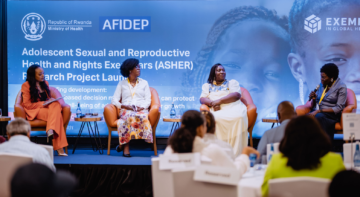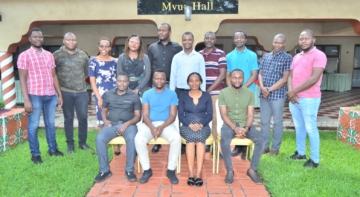Blogs

Mangochi a district in Southern Malawi, with a population of approximately 610, 239 and considered one of the districts with a high rate of unplanned teenage pregnancies, is the home of Chatuma. Chatuma was selected to a local secondary school at 13 years of age and she had a dream of becoming a doctor. She was a role model in her community because she was one of the few girls in her class who excelled in her Primary School Leaving Certificate examinations.
At age 15, Chatuma started a relationship with Isaac, a 17-year-old bicycle taxi driver, who was her childhood friend. Like many girls her age, she thought that having sex with her boyfriend would solidify her commitment to the relationship. She was not aware of the steps to prevent unwanted pregnancies and sexually transmitted infections. Her small community has no access to sexual and reproductive health services and even if they had, it is taboo for a young girl to seek such services. Soon, she discovered that she was pregnant and though she tried to access abortion services, she did not succeed. Chatuma dropped out of school to look after her baby and eventually married Isaac. She gave up her dream of becoming a doctor. Within a five-year span, she was a mother of 3 children. Meanwhile, Isaac’s taxi business could barely sustain the household.
By the time Chatuma was 21 years old, her firstborn child was ready to start primary school, and though there were no tuition fees, there were many associated costs to schooling that made it very difficult to educate her children. On the other hand, Isaac, coming from a polygamous home, married another wife, even though he could not support one family. This is a sad but common tale in the communities of Malawi which continue to repeat this cycle and contribute to adverse SRHR outcomes and poverty.
Adolescent pregnancies are a significant challenge in many parts of the world, particularly in developing countries. According to the World Health Organization (WHO), an estimated 21 million girls aged 15 to 19 years become pregnant every year, with 90% of these pregnancies occurring in developing countries. Nineteen percent (19%) of young women in developing countries get pregnant before age 18, accounting for 7.3 million births in a year. Girls under 15 account for 2 million of these births.
Unintended pregnancies have significant implications for both population growth and the quality of human capital. Early childbearing, often a result of unintended pregnancy or early marriage, leads to women having more children than they would have had if they started childbearing later in life. This has a direct impact on the overall fertility rate (TFR) of a population, contributing to population growth. Additionally, unintended pregnancies and unplanned births contribute to a larger number of births than would occur if pregnancies were planned. This can strain healthcare systems, educational resources, and other social services that need to accommodate the increased population. Insufficient investment in these services due to the burden of a larger population can limit their effectiveness and hinder social development.
At an individual level, unintended pregnancies and early parenthood can disrupt educational, training, and career plans for women, particularly if the pregnancies occur during their formative years. This can limit opportunities for personal growth, reduce earning potential, and lower women’s economic contributions. The resulting loss of human capital affects not only the individuals directly involved but also the broader socio-economic development of communities and societies. Adolescents who have an unplanned pregnancy may seek unsafe abortion methods, leading to maternal morbidity or even death.
This example notwithstanding, Malawi’s efforts to reduce teenage childbearing have been noted by the Exemplars Global Health programme, and it has been selected as a positive outlier country in Southern Africa. This is an important opportunity for the country to accelerate progress in adolescent SRHR. Adolescents between the ages 15 and 19 make up 24% of the nation’s population, and their access to SRHR services is essential to achieving the country’s development plan Vision 2063 and attaining Sustainable Development Goals 3 to ensure healthy lives and promoting well-being for all at all ages, including universal access to sexual and reproductive health and reproductive rights. Integrating youth considerations, not only in all stages of policymaking but also in service provision, is critical in propelling the social and political changes necessary to ensure their reproductive health and well-being.
What must the Malawi government do to accelerate progress in adolescent SRHR?
- Dialogue and discourses on adolescent unintended adolescent pregnancies are needed as development hinges on good adolescents SRHR; Malawi’s concept of sustainable population and development should be reflected in financial commitments and investments in ASRHR services.
- There are gaps between the integration of adolescents’ SRHR policies and practice, revealed by the lack of coordination between different stakeholders in the ASRHR space. This is not only within government agencies but also between government and non-governmental sectors.
- This then fails to provide effective sustainable systems for ASRHR.
- There is a need to provide adequate information and comprehensive sex education in order to equip adolescents with the correct information. Failure to bridge the gap has led to the inaccessibility of appropriate sexual education and services are failing to help reduce the risks of unintended pregnancies, sexually transmitted infections and HIV.
Related Posts





